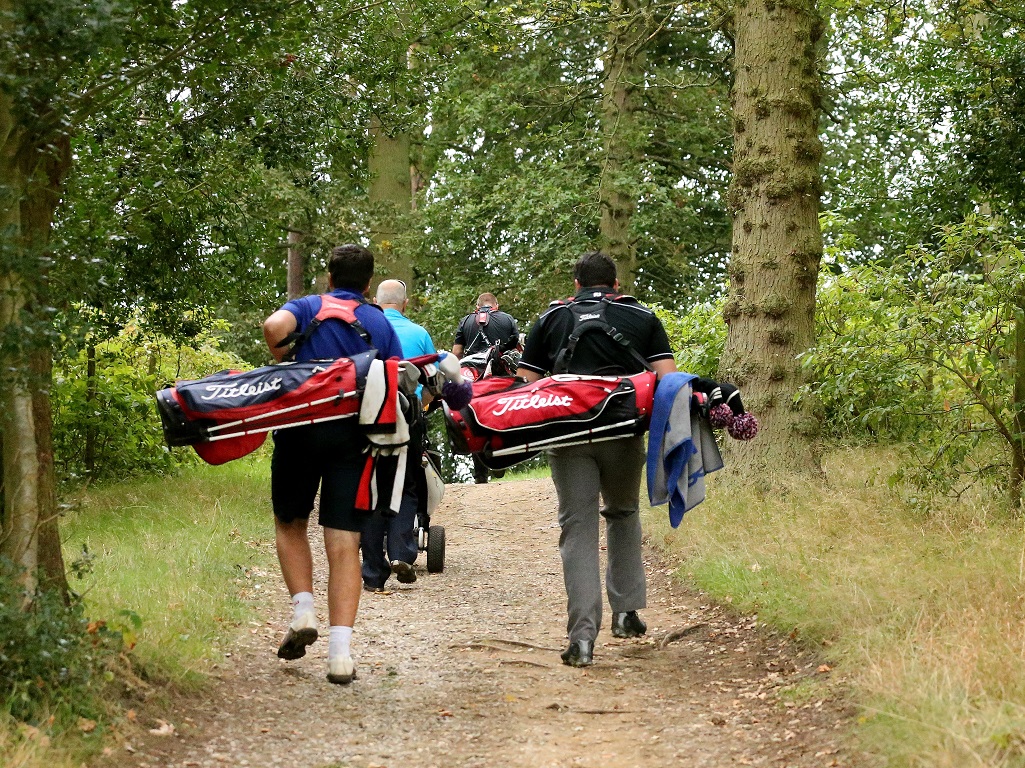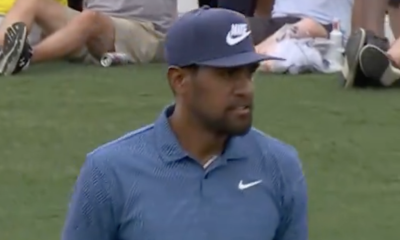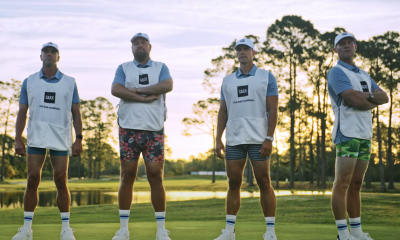Opinion & Analysis
The numbers you need to get a college golf scholarship

One of the most perplexing issues for junior golfers and their families is understanding where to look and how much scholarship (if any) they should expect. In this article, I want to introduce you to the coach’s perspective in recruiting, explain their thought process and then help you understand where to look and approximately how much to expect.
As a college student I was blessed to work a lot of college golf camps with a ton of great coaches. These coaches quickly taught me a lot, including a key rule when recruiting; when you first watch a player, image you can make four more copies. Then imagine with a team of five of them, where would you be ranked? Would you make regionals? Nationals? Match Play? Win it all?
Obviously at each level these numbers are different. So, let’s start by looking at some numbers:
In Division I Men’s Golf, the No. 1 team in Golfstat Cup finished with a scoring average of 69.99. The last team to make regionals (Michigan State) had an average score for their top four of 72.86. The 125th team at the end of the year last year was UC Riverside. The best player on the team averaged 73.93 for the year, while the fourth player averaged 77.51. Dartmouth was the 200th team had three players average better than 75 with the fourth player averaging 76.74.
In Division I Women’s, the No. 1 team in Golfstat Cup was Alabama which boasted an average of 70.93 among their top four. The last team to make regionals on the women’s side was Missouri. For the season, Missouri had a stroke average of 295.4. The 100th best team was Georgetown, with a scoring average of 303.64 (75.91 per player). The 200th best team in women’s golf was Appalachian State women’s golf. They had a team average of 312 (78 per player).
In DII Golf, West Florida Men were the best regular season team with a scoring average among their top four of 70.75. For Women, the best team, as well as eventual National Champions, was Indianapolis with a scoring average of 73.45 among their top four. The 25th team in DII Men’s Golf had an average among their top four of 73.47 and for women the number was 77.03. The 50th ranked team for Men averaged 294.7 as a team (73.675 per player), while the 50th women’s team averaged 322.3 (80.5 per player).
For DIII, the best men’s team was Methodist. Their top four averaged 73, while the top four for the best women’s team averaged 75.32. The 25th best men’s team top four averaged 74.96 and the top four for the 25th ranked women’s team averaged 81.37. The 50th ranked men’s team averaged 302.4 as a team (75.6 per player).
In the NAIA, the best men’s team top four averaged 71.64, while in women’s golf the number was 75.32. The 25th best men’s team averaged 73.13, while the 25th best women’s number was 78.53.
Now, let’s consider where you fit. Many students reading this article will have a ranking on Junior Golf Scoreboard. One aspect of the ranking is your scoring differential. Look that number up. Once you have it, add approximately one shot. Why one? For lots of reasons, including: college golf is likely harder, for many reasons not limited to having to balance school and golf, courses are less familiar, there can be more travel and you are often playing 72 holes in three grueling days.
Based on the competitive nature of college golf, most teams ranked within the top 30 percent of DI, 20 percent of DII and five percent of DIII and NAIA will likely require a scoring differential of one or better to even become a candidate since the data suggests that they need players who in college can average 73 or better (at worst). When considering allotting their scholarships, coaches are going to strongly consider your ability to contribute “countable rounds”; what is the likelihood and how often will your score count. When coaches think you will count at least 75 percent of the time is when they are most likely to make substantial offers.
Obviously, not everyone reading this article has a scoring differential of one or better. This does not mean that you cannot play college golf, nor does it mean that you cannot get a scholarship. The data suggests that as schools move towards the mean, they become less interested in pure golf results and more interested in the player’s “fit;” that is how they will represent the school and preform academically, as well as shoot scores which can contribute to the team’s ability to finish within the top three at their conference tournament.
Players with higher scoring differentials should certainly be concerned about their golf, but it is likely that the most appealing thing they can do is earn good grades and high test scores. Since approximately 50 percent of programs at every level don’t have full scholarship allotments, they often rely on academic money to package intriguing financial packages to attract prospective student athletes.
For girls, the range is much greater. Likely girls with scoring differentials of four or better are going to get significant attention, but it is likely that anyone with a scoring differential of six or better has a chance to not only get a large scholarship but likely that will come at the Division I level. Again, for female perspective student athletes with scoring differentials above six, don’t worry, there are lots of opportunities, however, like your male counterparts, make sure to get the best grades and test scores possible. They are likely to help and save you thousands of dollars!
- LIKE168
- LEGIT29
- WOW10
- LOL7
- IDHT2
- FLOP4
- OB3
- SHANK11
Opinion & Analysis
The Wedge Guy: What really makes a wedge work? Part 1

Of all the clubs in our bags, wedges are almost always the simplest in construction and, therefore, the easiest to analyze what might make one work differently from another if you know what to look for.
Wedges are a lot less mysterious than drivers, of course, as the major brands are working with a lot of “pixie dust” inside these modern marvels. That’s carrying over more to irons now, with so many new models featuring internal multi-material technologies, and almost all of them having a “badge” or insert in the back to allow more complex graphics while hiding the actual distribution of mass.
But when it comes to wedges, most on the market today are still single pieces of molded steel, either cast or forged into that shape. So, if you look closely at where the mass is distributed, it’s pretty clear how that wedge is going to perform.
To start, because of their wider soles, the majority of the mass of almost any wedge is along the bottom third of the clubhead. So, the best wedge shots are always those hit between the 2nd and 5th grooves so that more mass is directly behind that impact. Elite tour professionals practice incessantly to learn to do that consistently, wearing out a spot about the size of a penny right there. If impact moves higher than that, the face is dramatically thinner, so smash factor is compromised significantly, which reduces the overall distance the ball will fly.
Every one of us, tour players included, knows that maddening shot that we feel a bit high on the face and it doesn’t go anywhere, it’s not your fault.
If your wedges show a wear pattern the size of a silver dollar, and centered above the 3rd or 4th groove, you are not getting anywhere near the same performance from shot to shot. Robot testing proves impact even two to three grooves higher in the face can cause distance loss of up to 35 to 55 feet with modern ‘tour design’ wedges.
In addition, as impact moves above the center of mass, the golf club principle of gear effect causes the ball to fly higher with less spin. Think of modern drivers for a minute. The “holy grail” of driving is high launch and low spin, and the driver engineers are pulling out all stops to get the mass as low in the clubhead as possible to optimize this combination.
Where is all the mass in your wedges? Low. So, disregarding the higher lofts, wedges “want” to launch the ball high with low spin – exactly the opposite of what good wedge play requires penetrating ball flight with high spin.
While almost all major brand wedges have begun putting a tiny bit more thickness in the top portion of the clubhead, conventional and modern ‘tour design’ wedges perform pretty much like they always have. Elite players learn to hit those crisp, spinny penetrating wedge shots by spending lots of practice time learning to consistently make contact low in the face.
So, what about grooves and face texture?
Grooves on any club can only do so much, and no one has any material advantage here. The USGA tightly defines what we manufacturers can do with grooves and face texture, and modern manufacturing techniques allow all of us to push those limits ever closer. And we all do. End of story.
Then there’s the topic of bounce and grinds, the most complex and confusing part of the wedge formula. Many top brands offer a complex array of sole configurations, all of them admittedly specialized to a particular kind of lie or turf conditions, and/or a particular divot pattern.
But if you don’t play the same turf all the time, and make the same size divot on every swing, how would you ever figure this out?
The only way is to take any wedge you are considering and play it a few rounds, hitting all the shots you face and observing the results. There’s simply no other way.
So, hopefully this will inspire a lively conversation in our comments section, and I’ll chime in to answer any questions you might have.
And next week, I’ll dive into the rest of the wedge formula. Yes, shafts, grips and specifications are essential, too.
- LIKE27
- LEGIT7
- WOW1
- LOL1
- IDHT2
- FLOP3
- OB1
- SHANK2
Golf's Perfect Imperfections
Golf’s Perfect Imperfections: Amazing Session with Performance Coach Savannah Meyer-Clement

In this week’s episode, we spent some time with performance coach Savannah Meyer-Clement who provides many useful insights that you’ll be able to implement on the golf course.
- LIKE0
- LEGIT0
- WOW0
- LOL0
- IDHT0
- FLOP0
- OB0
- SHANK0
19th Hole
Vincenzi’s 2024 RBC Heritage betting preview: Patrick Cantlay ready to get back inside winner’s circle

Just a two-hour drive from Augusta National, the PGA TOUR heads to Harbour Town Golf Links in Hilton Head Island, S.C. Hilton Head Island is a golfer’s paradise and Harbour Town is one of the most beautiful and scenic courses on the PGA TOUR.
Harbour Town Golf Links is a par-71 that measures 7,121 yards and features Bermuda grass greens. A Pete Dye design, the course is heavily tree lined and features small greens and many dog legs, protecting it from “bomb-and-gauge” type golfers.
The field is loaded this week with 69 golfers with no cut. Last year was quite possibly the best field in RBC Heritage history and the event this week is yet another designated event, meaning there is a $20 million prize pool.
Most of the big names on the PGA Tour will be in attendance this week with the exceptions of Hideki Matsuyama and Viktor Hovland. Additionally, Webb Simpson, Shane Lowry, Gary Woodland and Kevin Kisner have been granted sponsors exemptions.
Past Winners at Harbour Town
- 2023: Matt Fitzpatrick (-17)
- 2022: Jordan Spieth (-13)
- 2021: Stewart Cink (-19)
- 2020: Webb Simpson (-22)
- 2019: CT Pan (-12)
- 2018: Sotoshi Kodaira (-12)
- 2017: Wesley Bryan (-13)
- 2016: Branden Grace (-9)
- 2015: Jim Furyk (-18)
In this article and going forward, I’ll be using the Rabbit Hole by Betsperts Golf data engine to develop my custom model. If you want to build your own model or check out all of the detailed stats, you can sign up using promo code: MATTVIN for 25% off any subscription package (yearly is best value).
Key Stats For Harbour Town
Let’s take a look at key metrics for Harbour Town Golf Links to determine which golfers boast top marks in each category over their past 24 rounds.
Strokes Gained: Approach
Strokes Gained: Approach is exceedingly important this week. The greens at Harbour Town are about half the size of PGA TOUR average and feature the second-smallest greens on the tour. Typical of a Pete Dye design, golfers will pay the price for missed greens.
Total SG: Approach Over Past 24 Rounds
- Scottie Scheffler (+1.27)
- Tom Hoge (+1.27)
- Corey Conners (+1.16)
- Austin Eckroat (+0.95)
- Cameron Young (+0.93)
Good Drive %
The fairways at Harbour Town are tree lined and feature many dog legs. Bombers tend to struggle at the course because it forces layups and doesn’t allow long drivers to overpower it. Accuracy is far more important than power.
Good Drive % Over Past 24 Rounds
- Brice Garnett (88.8%)
- Shane Lowry (+87.2%)
- Akshay Bhatia (+86.0%)
- Si Woo Kim (+85.8%)
- Sepp Straka (+85.1%)
Strokes Gained: Total at Pete Dye Designs
Pete Dye specialists tend to play very well at Harbour Town. Si Woo Kim, Matt Kuchar, Jim Furyk and Webb Simpson are all Pete Dye specialists who have had great success here. It is likely we see some more specialists near the top of the leaderboard this week.
SG: TOT Pete Dye per round over past 36 rounds:
- Xander Schauffele (+2.27)
- Scottie Scheffler (+2.24)
- Ludvig Aberg (+2.11)
- Brian Harman (+1.89)
- Sungjae Im (+1.58)
4. Strokes Gained: Short Game (Bermuda)
Strokes Gained: Short Game factors in both around the green and putting. With many green-side bunkers and tricky green complexes, both statistics will be important. Past winners — such as Jim Furyk, Wes Bryan and Webb Simpson — highlight how crucial the short game skill set is around Harbour Town.
SG: SG Over Past 24 Rounds
- Jordan Spieth (+1.11)
- Taylor Moore (+1.02)
- Wyndham Clark (+0.98)
- Mackenzie Hughes (+0.86)
- Andrew Putnam (+0.83)
5. Greens in Regulation %
The recipe for success at Harbour Town Golf Links is hitting fairways and greens. Missing either will prove to be consequential — golfers must be in total control of the ball to win.
Greens in Regulation % over past 24 rounds:
- Brice Garnett (+75.0%)
- Scottie Scheffler (+69.9%)
- Corey Conners (+69.0%)
- Shane Lowry (+68.3%)
- Patrick Rodgers (+67.6%)
6. Course History
Harbour Town is a course where players who have strong past results at the course always tend to pop up.
Course History over past 24 rounds:
- Patrick Cantlay (+2.34)
- Cam Davis (+2.05)
- J.T. Poston (+1.69)
- Justin Rose (+1.68)
- Tommy Fleetwood (+1.59)
The RBC Heritage Model Rankings
Below, I’ve compiled overall model rankings using a combination of the five key statistical categories previously discussed — SG: Approach (24%), Good Drives (20%), SG: SG (14%), SG: Pete Dye (14%), GIR (14%), and Course History (14%)
- Shane Lowry
- Russell Henley
- Scottie Scheffler
- Xander Schauffele
- Corey Conners
- Wyndham Clark
- Christiaan Bezuidenhout
- Matt Fitzpatrick
- Cameron Young
- Ludvig Aberg
2024 RBC Heritage Picks
Patrick Cantlay +2000 (FanDuel)
With the exception of Scottie Scheffler, the PGA Tour has yet to have any of their star players show peak form during the 2024 season. Last week, Patrick Cantlay, who I believe is a top-5 players on the PGA Tour, took one step closer to regaining the form that’s helped him win eight events on Tour since 2017.
Cantlay limped into the Masters in poor form, but figured it out at Augusta National, finishing in a tie for 20th and ranking 17th for the week in Strokes Gained: Ball Striking. The former FedEx Cup champion will now head to one of his favorite golf courses in Harbour Town, where he’s had immaculate results over the years. In his six trips to the course, he’s only finished worse than 7th one time. The other finishes include three third places (2017, 2019, 2023) and one runner-up finish (2022). In his past 36 rounds at Harbour Town, Cantlay ranks 1st in Strokes Gained: Total per round at the course by a wide margin (+2.36).
Cantlay is winless since the 2022 BMW Championship, which is far too long for a player of his caliber. With signs pointing to the 32-year-old returning to form, a “signature event” at Harbour Town is just what he needs to get back on the winning track.
Tommy Fleetwood +3000 (FanDuel)
I truly believe Tommy Fleetwood will figure out a way to win on American soil in 2024. It’s certainly been a bugaboo for him throughout his career, but he is simply too talented to go another season without winning a PGA Tour event.
At last week’s Masters Tournament, Fleetwood made a Sunday charge and ended up finishing T3 in the event, which was his best ever finish at The Masters. For the week, the Englishman ranked 8th in the field in Strokes Gained: Approach, 10th in Strokes Gained: Ball Striking and 16th in Strokes Gained: Putting.
Harbour Town is a perfect layout for Fleetwood, and he’s had relative success at this Pete Dye design in the past. In his four trips to the course, he’s finished inside of the top 25 three times, with his best finish, T10, coming in 2022. The course is pretty short and can’t be overpowered, which gives an advantage to more accurate players such as Fleetwood. Tommy ranks 8th in the field in Good Drive % and should be able to plot his way along this golf course.
The win is coming for Tommy lad. I believe there’s a chance this treasure of a golf course may be the perfect one for him to finally break through on Tour.
Cameron Young +3300 (FanDuel)
Cameron Young had a solid Masters Tournament last week, which is exactly what I’m looking for in players who I anticipate playing well this week at the RBC Heritage. He finished in a tie for 9th, but never felt the pressure of contending in the event. For the week, Young ranked 6th in Strokes Gained: Off the Tee and 6th in Strokes Gained: Ball Striking.
Despite being one of the longest players off the tee on the PGA Tour, Young has actually played some really good golf on shorter tracks. He finished T3 at Harbour Town in 2023 and ranks 20th in the field in Good Drive% and 16th in Greens in Regulation in his past 24 rounds. He also has strong finishes at other shorter courses that can take driver out of a players hand such as Copperhead and PGA National.
Young is simply one of the best players on the PGA Tour in 2024, and I strongly believe has what it takes to win a PGA Tour event in the very near future.
Corey Conners +5500 (FanDuel)
Corey Conners has had a disappointing year thus far on the PGA Tour, but absolutely loves Harbour Town.
At last week’s Masters Tournament, the Canadian finished T30 but ranked 20th in the field in Strokes Gained: Approach. In his past 24 rounds, Conners ranks 3rd in the field in Strokes Gained: Approach, 3rd in Greens in Regulation % and 24th in Good Drive %.
In Conners’ last four trips to Harbour Town, his worst finish was T31, last season. He finished T4 in 2021, T12 in 2022 and ranks 8th in Strokes Gained: Total at the course over his past 36 rounds.
Conners hasn’t been contending, but his recent finishes have been encouraging as he has finished in the top-25 in each of his past three starts prior to The Masters, including an impressive T13 at The PLAYERS. His recent improvement in ball striking as well as his suitability for Harbour Town makes Conners a high upside bet this week.
Shane Lowry (+7500) (FanDuel)
When these odds were posted after Lowry was announced in the field, I have to admit I was pretty stunned. Despite not offering much win equity on the PGA Tour over the last handful of years, Shane Lowry is still a top caliber player who has the ability to rise to the top of a signature event.
Lowry struggled to score at The Masters last week, but he actually hit the ball really well. The Irishman ranked 1st for Strokes Gained: Approach on the week and 7th in Strokes Gained: Ball Striking. As usual, it was the putter that let him down, as he ranked 60th in the field in Strokes Gained: Putting.
Harbour Town is most definitely one of Lowry’s favorite courses on the PGA Tour. In his six starts there, he’s finished in the top 10 three times, including third twice. Lowry is sensational at Pete Dye designs and ranks 7th in Strokes Gained: Total in his past 36 rounds on Dye tracks.
Lowry is perfect for Harbour Town. In his past 24 rounds, he ranks 5th in Strokes Gained: Approach, 2nd in Good Drive% and 5th in Green in Regulation %. If he figures it out on the greens, Shane could have his first win in America since 2015.
Lucas Glover +12000 (FanDuel)
This is one of my weekly “bet the number” plays as I strongly believe the odds are just too long for a player of Glover’s caliber. The odds have been too long on Glover for a few weeks now, but this is the first event that I can get behind the veteran being able to actually contend at.
Glover is quietly playing good golf and returning to the form he had after the understandable regression after his two massive victories at the end of 2023. He finished T20 at The Masters, which was his best ever finish at Augusta National. For the week, Lucas ranked 18th for Strokes Gained: Approach and 20th in Strokes Gained: Ball Striking.
Over his past 24 rounds, Glover ranks 9th in Strokes Gained: Approach and 13th in Good Drive %. Harbour Town is a short course that the 44-year-old will be able to keep up with the top players on Tour off the tee. He’s played the course more than 20 times, with mixed results. His best finishes at Harbour Town include a T7 in 2008, but recently has a finish of T21 in 2020.
Glover has proven he can contend with the stars of the Tour on any given week, and this number is flat out disrespectful.
- LIKE30
- LEGIT5
- WOW2
- LOL1
- IDHT1
- FLOP2
- OB0
- SHANK2
-

 19th Hole1 week ago
19th Hole1 week agoDave Portnoy places monstrous outright bet for the 2024 Masters
-

 19th Hole3 weeks ago
19th Hole3 weeks agoThings got heated at the Houston Open between Tony Finau and Alejandro Tosti. Here’s why
-

 19th Hole2 weeks ago
19th Hole2 weeks agoTiger Woods arrives at 2024 Masters equipped with a putter that may surprise you
-

 19th Hole2 weeks ago
19th Hole2 weeks agoReport: Tiger Woods has ‘eliminated sex’ in preparation for the 2024 Masters
-

 19th Hole6 days ago
19th Hole6 days agoTwo star names reportedly blanked Jon Rahm all week at the Masters
-

 19th Hole5 days ago
19th Hole5 days agoNeal Shipley presser ends in awkward fashion after reporter claims Tiger handed him note on 8th fairway
-

 19th Hole4 days ago
19th Hole4 days agoReport: LIV Golf identifies latest star name they hope to sign to breakaway tour
-

 19th Hole3 weeks ago
19th Hole3 weeks agoAddiction, spinal fusion, and scam artists – Everything Anthony Kim revealed in candid interview with David Feherty


























Walter
Oct 24, 2018 at 9:31 pm
I am a 48 year old with eligibility left. (2.0 handicap) LOL. What is the average yardage and course rating these players play?
Austin
Nov 13, 2018 at 1:36 pm
I play college golf for a high level division II team… I would say the average course we play is about 7,000-7,200 yards and has a course rating of around 74.5. In 4 rounds of qualifying, it typically takes a final score around Even (or roughly 288) to make the starting 5.
Nuno
Oct 24, 2018 at 2:51 pm
Do you have any college preparation coaches recommendations in Northern California for a 13 year old with a tournament play 1.3 handicap?
Dan
Oct 24, 2018 at 3:19 pm
keep it up! work on your shortgame
Christian
Oct 25, 2018 at 10:03 am
Develop speed, the courses get much longer. Get used to walking 36 holes.
Ryan Michael
Oct 24, 2018 at 1:17 pm
So simply break 80 and you’ll have numerous schools knocking at your doorstep. Yawn.
Adkskibum
Oct 24, 2018 at 7:30 pm
Data analysis is not your strong suit is it?
Left Hand Down
Dec 7, 2018 at 9:42 am
Did you even read the article?
Jamie
Oct 24, 2018 at 11:08 am
2 things:
1. Makes no mention of the difference in course difficulty between DI and DIII and NAIA. Yes, there is a difference.
2. Next time make a table and don’t bury the information in useless verbage.
Nancy
Mar 2, 2019 at 12:58 pm
Not 100% sure on your comment about course difficulty based on D1 vs NAIA.
My NAIA school played , this Fall, PGA National West Palm, Doral Red Tiger and Blue Monster, Kinderlou plus Innisbrooke.
mel
Oct 24, 2018 at 10:30 am
went through this whole scenario with my female junior player.
i like to think that i was realistic about the possibility of scholarships.
small D1 schools did not even reply to emails, resumes, phone calls, school
visit to meet the coach. even though a few D1 schools offered scholarship ,ended up getting a partial scholarship to a small D2 program. she just did not like the campus and went with her gut feeling.
in the end, i think it’s best for the student-athlete to happy with school and academics first.
then golf would most likely be easier.
Dan
Oct 23, 2018 at 7:33 pm
I was offered scholarships in 1994. I would’ve been laughed at today.
AKaufman
Oct 23, 2018 at 5:34 pm
Its tough, I graduated in 2005. Had a -0.5 under par average in high school.
won some local amateur stuff.
Was living in CA, best full ride offers I was getting was East coast D1’s not the big time programs. Most big western schools invited me to walk on and try out.
Adkskibum
Oct 24, 2018 at 7:33 pm
So, what did you do? did you take the East Coast offer? If so, how’d it work out?